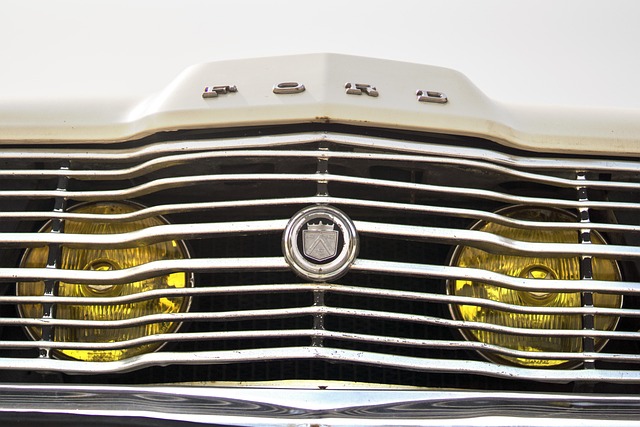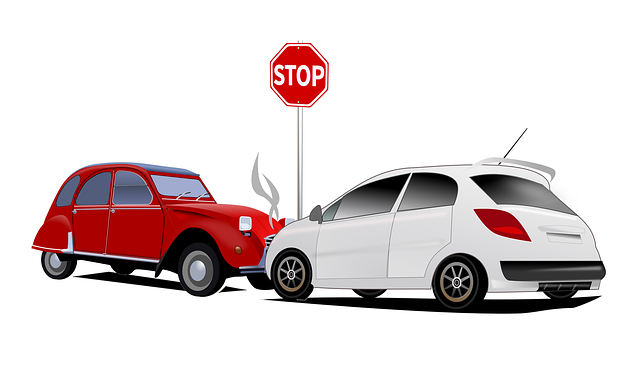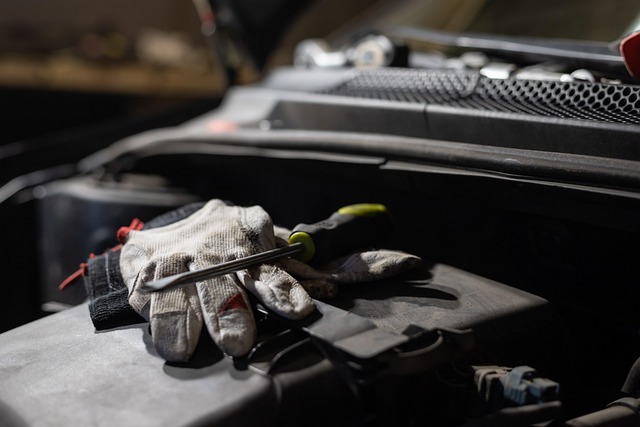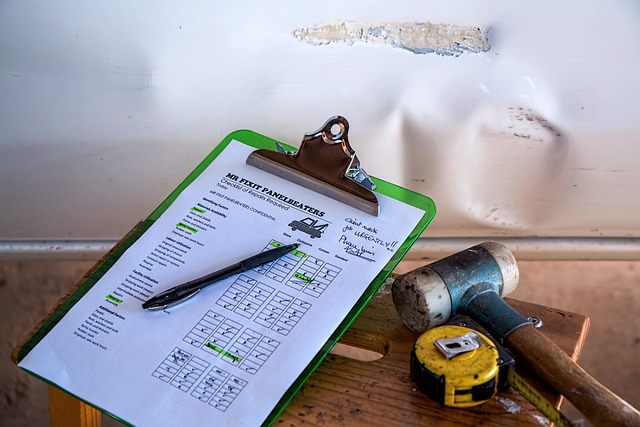Ultrasonic thickness gauges provide precise measurements for auto maintenance, enabling accurate damage assessment and informed repairs. Misreadings can lead to severe consequences like incorrect part selection and safety hazards. To avoid these issues, proper training, regular calibration, and adherence to best practices are essential. Technicians use techniques like perpendicular positioning, protective covers, and standardized test blocks to enhance measurement accuracy, ensuring effective repairs and customer satisfaction.
In today’s precision-driven world, accurate material measurement is paramount across various industries. This is where ultrasonic thickness gauges shine as indispensable tools. These non-destructive sensors measure material thickness with remarkable accuracy using high-frequency sound waves. However, misreadings can occur due to factors like surface conditions and material properties, leading to costly errors. This article delves into the common pitfalls of ultrasonic thickness gauge readings and explores effective techniques to prevent such misreadings, ensuring accurate measurements for industrial applications.
- Understanding Ultrasonic Thickness Gauges: How They Work
- Common Misreadings and Their Impact on Industries
- Techniques to Prevent Misreadings Using Ultrasonic Thickness Gauges
Understanding Ultrasonic Thickness Gauges: How They Work

Ultrasonic thickness gauges are innovative tools that play a pivotal role in ensuring precision and accuracy during various industrial applications, particularly in auto maintenance such as bumper repair and vehicle paint repair. These advanced devices operate by transmitting ultrasonic waves into a material’s surface. The waves travel through the material and are then reflected back to the gauge’s sensor. By measuring the time it takes for the wave to return, the gauge calculates the thickness of the material with remarkable accuracy. This non-invasive technique allows technicians to quickly assess the condition of various components without causing damage or disrupting their integrity, making it a valuable asset in auto body repair and other precision industries.
The process involves advanced signal processing algorithms that interpret the echo patterns returned from the material’s surface, translating this data into precise thickness measurements. This technology is particularly beneficial for quality control during manufacturing, ensuring that products meet specified standards. In auto maintenance, ultrasonic thickness gauges aid in determining the extent of damage to vehicle components, facilitating informed decisions for repairs and replacements, ultimately enhancing safety and vehicle performance.
Common Misreadings and Their Impact on Industries

In various industries, misreadings with ultrasonic thickness gauges can lead to significant issues and errors. These gauges are often relied upon for precise measurements in critical processes like quality control, manufacturing, and auto bodywork. Common misreadings include incorrect interpretations of gauge readings, human error during data entry, or inadequate calibration of the device. In the realm of auto damage repair and collision repair, such mistakes can have severe consequences. For instance, an inaccurate measurement might result in using the wrong replacement part, leading to poor fitment and potentially unsafe vehicles on the road.
The impact of these misreadings is far-reaching. In industries like car damage repair, where precision is paramount, incorrect thickness gauge readings can delay repairs, increase costs, and compromise the structural integrity of vehicles. This underlines the importance of proper training for technicians, regular calibration checks, and adherence to best practices to prevent such errors. With ultrasonic thickness gauges playing a pivotal role in many manufacturing and auto bodywork processes, minimizing misreadings is essential to ensure efficiency, quality, and safety across diverse industries.
Techniques to Prevent Misreadings Using Ultrasonic Thickness Gauges

To prevent misreadings with ultrasonic thickness gauges, technicians employ several techniques. First, they ensure proper calibration and regular maintenance of the equipment to guarantee accuracy. This involves using standardized test blocks to check for any drift in measurement performance and adjusting settings accordingly. Second, they apply these gauges correctly by positioning them perpendicularly to the material’s surface and ensuring good contact. Technicians also use protective covers when not in use to prevent contamination from dust or debris, which can impact readings.
In auto body services, collision repair, and fender repair, precision is key to achieving high-quality outcomes. By following these techniques, technicians minimize errors associated with ultrasonic thickness gauges. This not only enhances the accuracy of measurements but also ensures that repairs are consistent and effective, resulting in better customer satisfaction.
Ultrasonic thickness gauges are invaluable tools that enable technicians to accurately measure material thickness, crucial for various industries. By understanding how these devices function and implementing strategies to prevent misreadings, professionals can ensure consistent and reliable results. This, in turn, fosters quality control, reduces waste, and optimizes production processes, making ultrasonic thickness gauges a game-changer in modern manufacturing.














